Nose taping after Rhinoplasty is an important part of the recovery process that many plastic surgeons recommend following surgery. Using medical tape or specialized adhesive strips helps secure the nose shape, reduce swelling, and support proper contouring of the final result. In addition, nose taping helps minimize fluid buildup, allowing the soft tissues and cartilage structure to stabilize more quickly. However, it’s essential to understand the correct taping techniques and post-surgery care to speed up recovery and help the nose settle into its ideal form. Let Rhinoplasty Experience explore the following article for an overview of taping nose after rhinoplasty.
What if I don’t tape my nose after rhinoplasty?
In reality, not all patients are required to tape noses after rhinoplasty. This should only be done under the direction of a qualified plastic surgeon who specializes in nasal surgery. In many cases, taping noses after rhinoplasty offers noticeable benefits in terms of aesthetics, health, and daily comfort. Proper taping helps maintain a stable nose shape, control swelling and discomfort, and support faster recovery of the bone and cartilage structure.
On the other hand, if patients skip nose taping when advised by their surgeon, the recovery process may carry several risks, including:
- The nose shape becomes deformed or unbalanced.
- Prolonged healing time, affecting daily activities.
- Increased risk of post-surgical complications.
- Persistent swelling that delays recovery.
Therefore, to achieve the best aesthetic results and ensure safety, patients should strictly follow their surgeon’s postoperative care instructions, including nose taping if recommended. Proper taping also helps manage the rhinoplasty swelling stages more effectively. Ignoring or performing the taping incorrectly can directly affect the rhinoplasty outcome and extend the recovery period.
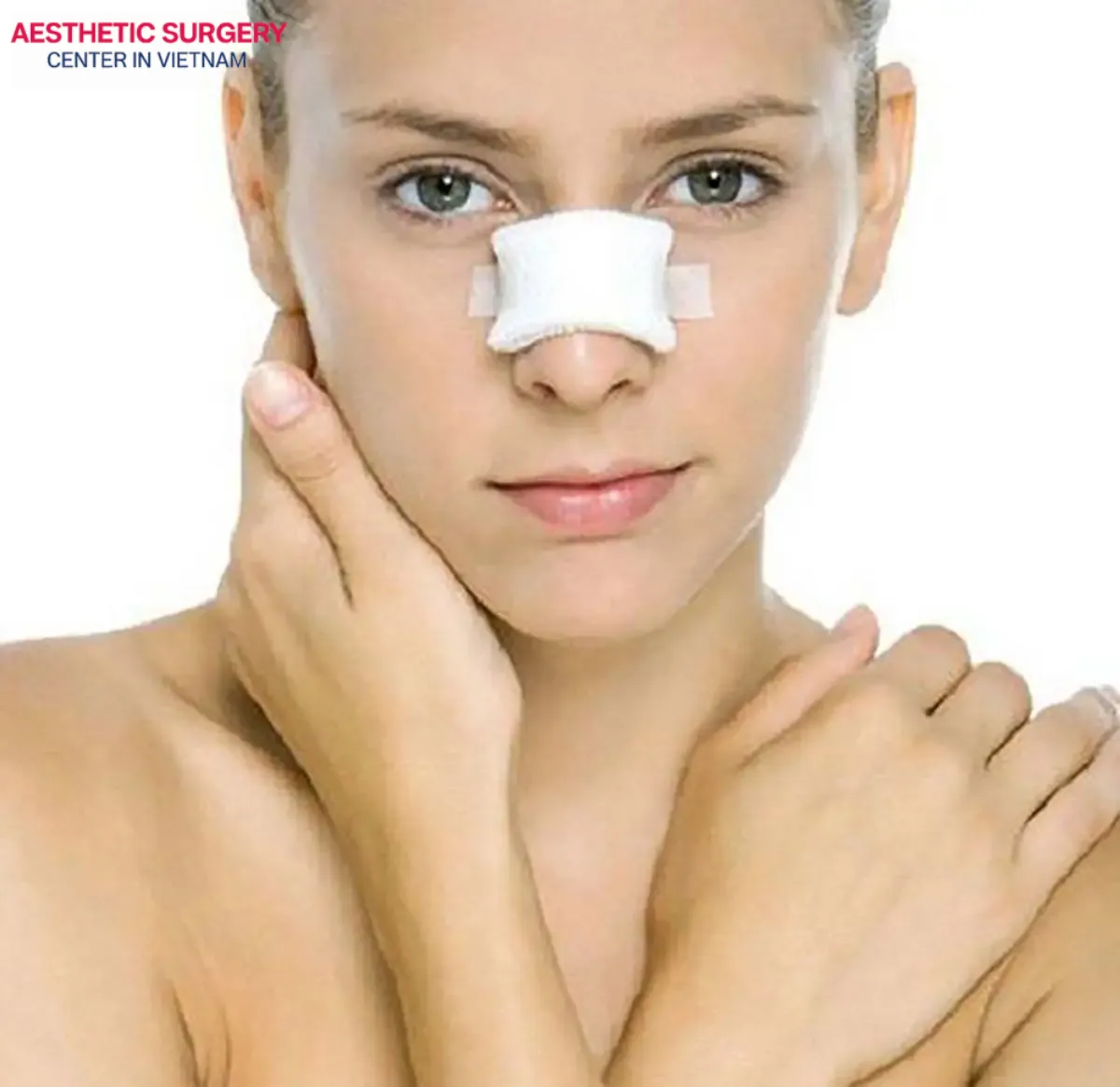
How to tape nose after rhinoplasty?
Although this technique may seem simple, achieving optimal results requires following the detailed instructions of your plastic surgeon. The choice of tape, taping method, and duration of use all have a direct impact on the recovery outcome.
Preparation before nose taping
Usually, doctors recommend using specialized medical tape that adheres well, is safe for the skin, and causes minimal irritation. In some cases, traditional medical tape or pressure tape may also be used, depending on the level of swelling and the patient’s individual condition. Before applying the tape, make sure to clean the skin around the nose thoroughly and pat it dry to help the tape stick more securely.
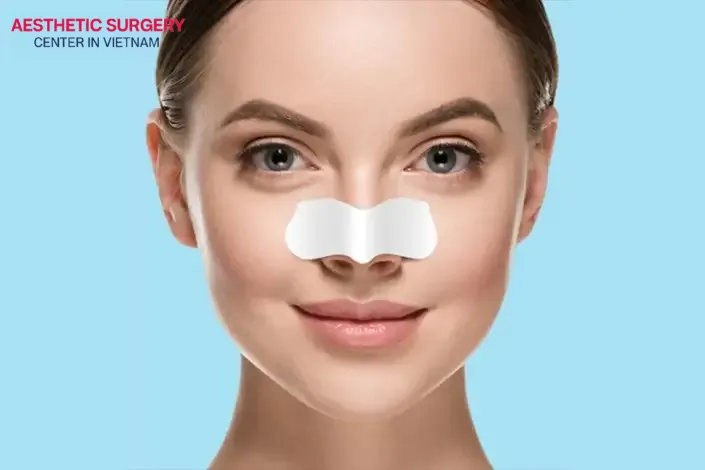
Basic nose taping steps
Step 1: Taping the bridge of the nose: Cut 3 to 5 strips of medical tape, each about 5 cm long. Start from the tip of the nose and apply the strips upward along the bridge, slightly overlapping each piece until the entire bridge is covered.
Step 2: Securing the nose tip: Use a longer strip of tape and shape it into a “U” around the tip of the nose. Be careful not to cover the nostrils, as this may make breathing difficult.
Step 3: Strengthening the hold: Apply a few smaller strips vertically along the bridge of the nose to secure the “U”-shaped tape in place, preventing the tip from shifting.
Nose taping duration after rhinoplasty
In the first few days, your doctor may advise you to keep the tape on 24/7 to help control swelling. After 2-3 days, you should remove and replace the tape to prevent sweat and dirt buildup that could irritate the skin. Once the healing process becomes more stable, taping is usually only needed at night to help maintain the nose shape and reduce any remaining swelling.
Safe way to remove nose tape
Remove the tape gently to avoid damaging the skin and newly healed tissues. You can take it off after a warm shower when the tape has softened and is easier to peel away. Alternatively, apply a small amount of baby oil or moisturizer to reduce adhesion. Avoid pulling the tape off forcefully or at an angle, as this can cause pain and affect the shape of your nose.
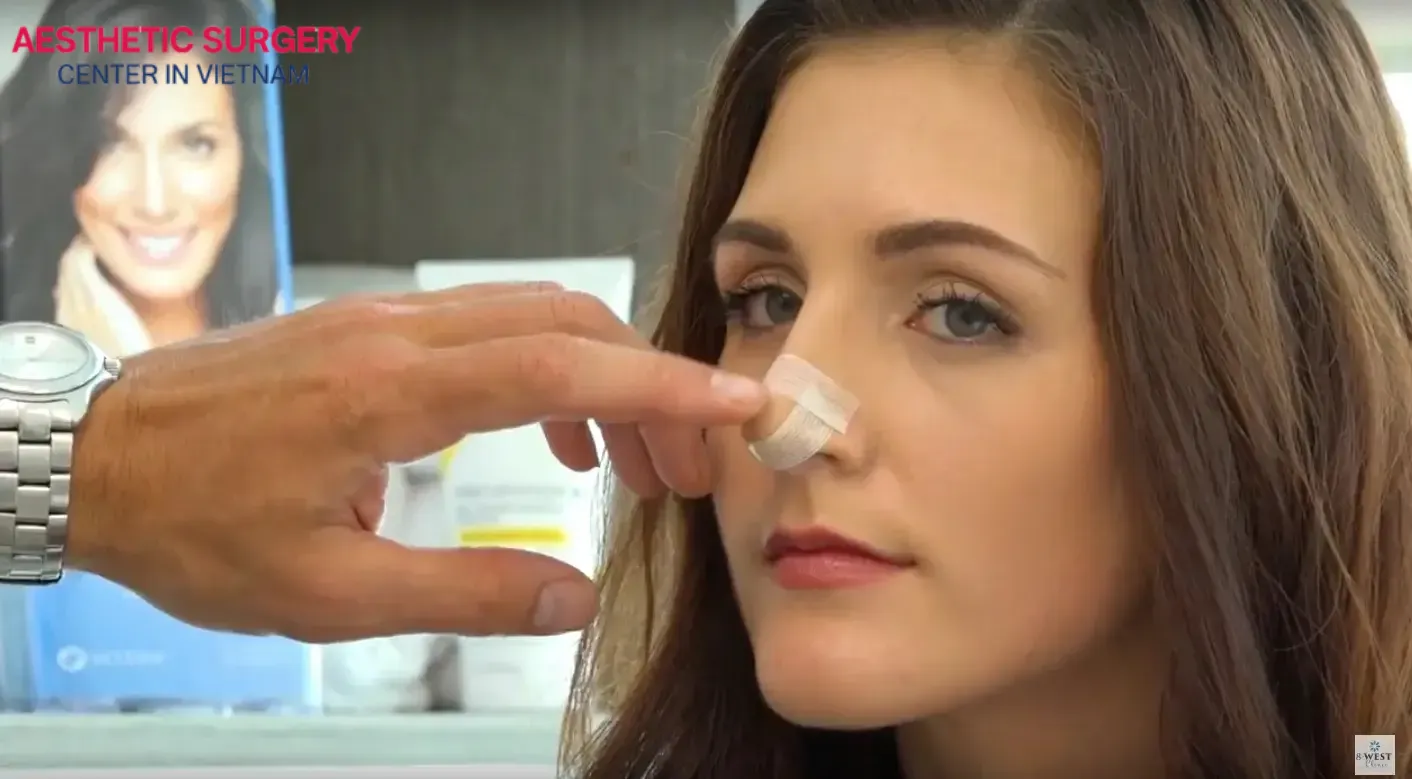
Notes
Do not change the taping method on your own; always follow your surgeon’s specific instructions. Each patient has different nasal characteristics and surgical procedures, so the taping duration and technique may vary. Following the doctor’s guidance correctly helps minimize complications, shorten recovery time, and maintain a beautiful, well-balanced nose shape in the long term.
How long should I tape my nose after rhinoplasty?
The nose taping period after rhinoplasty usually lasts from 1 to 3 months, depending on the extent of the surgery and each patient’s healing speed. During the initial phase, especially within 2-4 weeks after surgery, continuous taping plays an important role in reducing swelling, stabilizing the nose shape, and supporting soft tissue recovery. Once the swelling has improved, your doctor may advise you to tape your nose only at night to help maintain the aesthetic results.
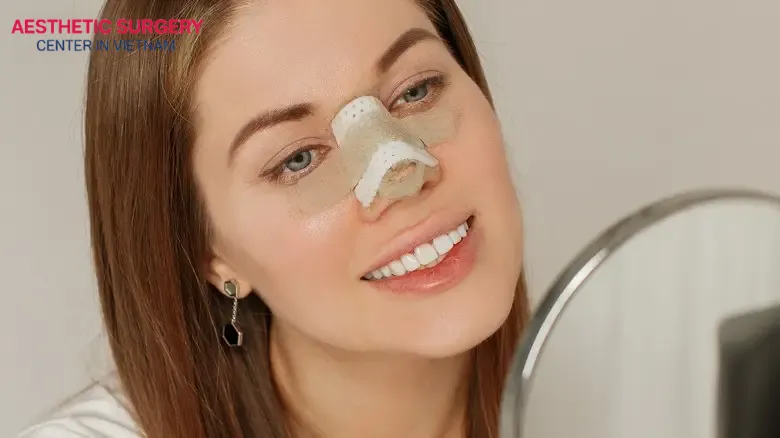
Each rhinoplasty case is different, so there is no fixed timeframe that applies to everyone. Patients should follow the specific instructions given by their plastic surgeon and attend regular follow-up appointments so the doctor can assess healing progress and determine the appropriate time to stop taping. Maintaining nose taping for the recommended duration helps reduce the risk of deformity, ensures the nose settles into its proper shape, and keeps results stable over time.
Stopping taping too early or performing it incorrectly can prolong recovery and affect the desired nose shape. Therefore, being patient and strictly following postoperative care instructions is key to achieving a beautiful, balanced, and safe result after Rhinoplasty.
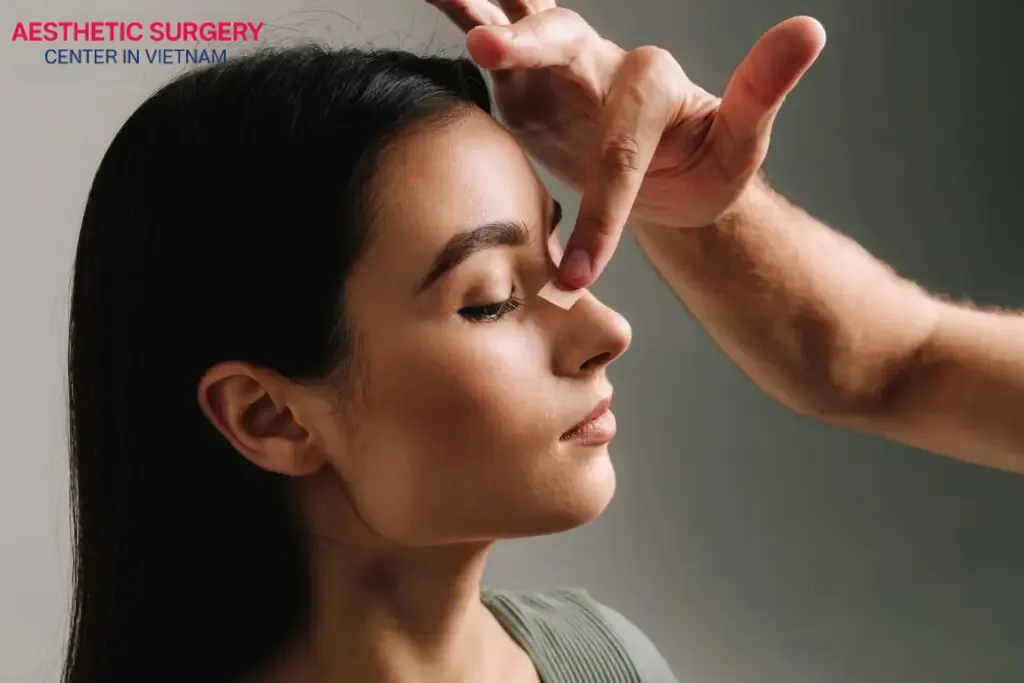
See more: A collection of Frequently asked questions about rhinoplasty
Taping nose after rhinoplasty is a simple yet essential step in helping stabilize the nose shape and speed up the healing process. Therefore, following your doctor’s instructions carefully will help minimize complications and achieve a natural, long-lasting aesthetic result. Since each person’s recovery process is different, it’s important to attend regular follow-up appointments and tape the nose according to your surgeon’s specific guidance.
If you’re considering improving your nose shape for a more refined and attractive look, choose a trusted clinic for safe and effective surgery. Aesthetics Surgery Center brings together highly skilled surgeons, advanced technology, and a medically standardized care process. Contact hotline 0911 582 499 for detailed consultation and to schedule your rhinoplasty appointment.




















Comment on the post